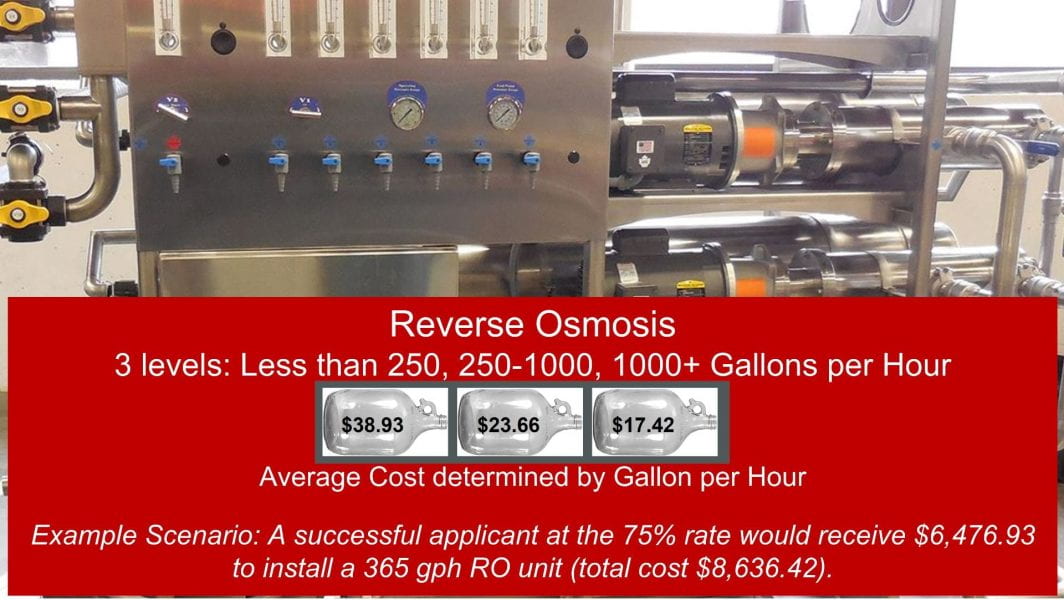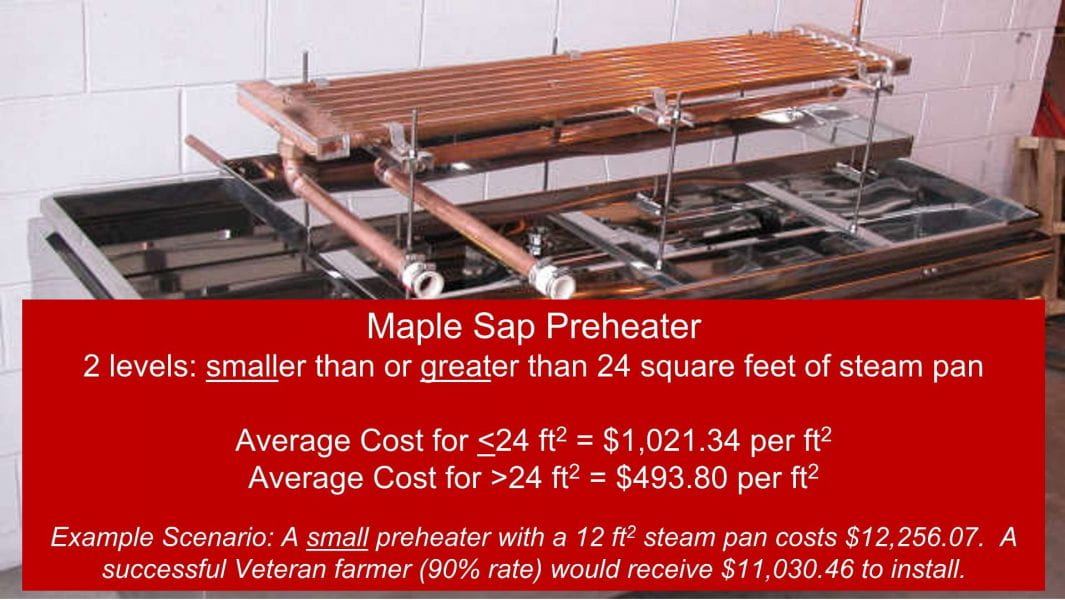The Environmental Quality Incentive Program, EQIP for short, provides financial and technical assistance to agricultural producers and woodland managers to combat environmental concerns and provide natural resources benefits. Maple Producers should be excited to know that several maple practices are now eligible under EQIP.
How does EQIP work in the first place?
EQIP is a voluntary program, and contracts are available for a single year ranging up to a full decade. The list of EQIP practices is long. If you can imagine an environmental issue facing a farmer or woodland owner, you can safely bet there is an EQIP practice (or 3!) to meet that need. Successful applicants to receive EQIP assistance paid at either a 75% or 90% rate to implement the recommended activity on their property. Historically Underserved applicants, which includes Beginning Farmers, Limited Resource Farmers, Socially Disadvantaged Farmers, and Veteran Farmers, can tap into the higher 90% rate.
How does maple fit in to EQIP?
There is no set-aside pot of money allocated only for maple producers. To improve your chances to get maple-related assistance, you should couple forestry- or wildlife-related practices. Think tree or shrub plantings, managing grapevines or invasive species, or improving your woods through a Timber Stand Improvement (TSI) cut for just a few examples. If you are a farmer, there are plenty of other practices to consider as well. The more comprehensive and realistic your application to EQIP is, the better your odds of being a successful awardee.
So what are the maple-specific EQIP practices? There are functionally 2 practices – reverse osmosis and sap preheaters that fall under Practice Code 374 – Energy Efficient Agricultural Operation. Once you break up the size of sap preheaters into small/large and bracket RO units as small/medium/large capacity, the number of specific items actually grows to 5. The 2 graphics below will explain more of the cost rate assistance details.
When/how do I apply?
The very first step is to determine if you are eligible to apply, and the initial process starts with establishing records with the Farm Service Agency. Once eligibility is determined, you can proceed with your application. All the applications are ranked against one another for funding priority. In other words, EQIP ranks applications to ensure their dollars are going as far and as efficiently as they possibly can.
When to apply is just as important as How to apply. The next batch of EQIP applications will be finalized and ranked on January 14th for the Fiscal Year 2022. Though applications can be submitted year-round, any application received after mid-January will be considered in the 2023 batch of applications.
Who can help me apply?
You should contact your local NRCS service center and get in touch with the ODNR Service Forester covering your territory.
When will I find out if I got EQIP assistance?
It’s hard to know an exact date; however, once when successful applicants are notified, the final step is to sign contract documents once they are ready.
Don’t be discouraged if you miss the January 14th deadline, you can always be working on your application for the next Fiscal Cycle. While there is no guarantee that maple producers will be so well-positioned to benefit from EQIP in coming years, EQIP is a wonderful program that can benefit your maple operation but in much broader ways as well.
Author: Gabe Karns 
Special thanks to Gary Graham for forwarding information about the Practice Code 374 eligibility.

